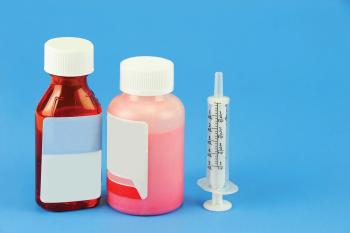
- Pharmaceutical Technology-06-02-2019
- Volume 43
- Issue 6
Looking Beyond the Solubility Horizon
Exploration of various formulation techniques is vital to provide effective delivery of poorly soluble drugs.
Poor solubility is becoming increasingly prevalent within bio/pharma drug development and is a trend that is anticipated to continue to grow as a result of the industry drive toward development of more molecularly complex chemical entities. Yet, poorly aqueous soluble compounds are not readily bioavailable for humans, and as such, these theoretically effective therapeutic molecules are severely limited in value.
“Without exploring alternative formulation techniques, actives that are highly effective in theory or during in-vitro testing may never progress through the development pipeline, and patients may never be able to benefit from them,” states Robert Lee, PhD, president of Particle Sciences. “Therefore, exploration of effective methods to improve solubility or dissolution rates of these complex molecules is vital.”
A range of techniques
There are several techniques available to help enhance solubility of drugs or to improve its dissolution rate so that a finished product with sufficient bioavailability can be developed. Approaches such as amorphous solid dispersions, complex formation, and nano-suspensions are among some of the common methods employed within the industry, Lee adds.
“It is important in development to assess a range of techniques to address the molecule-specific challenges that become apparent during pre-formulation,” he continues. “Armed with the proper knowledge and tools, formulation scientists can narrow down the potential approaches to find a strategy to provide the effective delivery of poorly soluble drugs.”
Amorphous solid dispersions. Used to overcome limited aqueous solubility and enhance oral adsorption, amorphous solid dispersions work by delivering the drug in the amorphous form. “With the API in a non-crystalline state, less energy is required for dissolution and hence absorption may be enhanced,” Lee says.
However, the potential for amorphous formulations to revert to the more stable crystalline form in storage is a major limitation of the technique. If the solid-state reverts to the crystalline form, the physical characteristics of the API are affected, which can adversely impact the solubility and dissolution rates.
“Knowledge of the solid-state characteristics of the API is required for this approach as amorphous solids may be metastable and revert to a more stable crystalline form,” confirms Lee. “Sometimes this is not observed until well into a stability program, so solid-state characteristics should be assessed in stability protocols. Proper processing and the right selection of excipients are critical for a successful amorphous formulation.”
Complex formation. In this technique, the drug and the matrix interact in an aqueous environment, forming a complex. The formed complexes augment dissolution and bioavailability of poorly soluble APIs through a low association constant, and can also enhance the stability of the drug product. In inclusion complexes, for example, stability is improved as the API is encapsulated (fully or partially) within a hydrophobic cavity of the host molecule.
“Cyclodextrins have mainly been used as complexing agents to increase the aqueous solubility of poorly soluble actives,” Lee says. “Different cyclodextrin derivatives are available, and successful development relies on the ability to select the best analogue at the right concentration.”
Yet, Lee goes on to explain that as cyclodextrin formulations are intended to be solutions, the complexes are governed by thermodynamics and have different equilibrium binding constants. “Binding is an equilibrium phenomena, so large molar excesses are sometimes required for adequate complexation,” he notes. “In some cases, it may take 8 g of a cyclodextrin to encapsulate 300 mg of API. This is a relatively high dose of cyclodextrin and may be associated with real or perceived toxicity. Also, we have encountered cases where we had to optimize the encapsulation process to obtain a true solution.”
Nano-suspensions. Useful for oral and inhaled drug products and especially beneficial for parenterals, nano-suspensions involve the dispersion of nanometer-sized drug particles in an aqueous vehicle. In top-down methods, the API undergoes nanomilling to increase the exposed surface area, ultimately improving the rate of dissolution, which is inversely proportional to the diameter of the drug particle. “Additionally, nanomilling improves the homogeneity of a drug product and therefore content and dose uniformity,” Lee says.
Nanoparticulate suspensions, therefore, behave in a similar fashion to a molecular solution, and from a manufacturing standpoint, Lee states that the process overall is efficient, reproducible, and highly scalable. “However, identifying the proper formulation composition and process are key, and a typical challenge is identifying a formulation that maintains its stability over time,” he adds. “For a formulation to be developed effectively, it requires highly experienced individuals who truly understand the process.”
So, despite the seemingly simple concept of nanoparticulate suspensions, development may not be as straightforward, with success being dependent upon the right combination of an experienced team of scientists and data interpretation to avoid formulation pitfalls. “Nanoparticulate suspensions tend to become unstable and agglomerate over time, due to high surface energy of the particles, and can also exhibit Ostwald Ripening, whereby small particles preferentially dissolve and then re-crystallize onto the larger particles,” Lee says.
Therefore, he explains that a key factor in generating a viable formulation is the optimal selection of a stabilizer. Not only must this selection process take into consideration the physicochemical and pre-formulation data on the API, but it must also factor in the primary properties of the stabilizers themselves.
“In general, there is no ‘one-size-fits-all’ approach to the selection of nanoparticulate suspension stabilizers, so often an iterative process of optimization of stabilizer selection and concentrations is necessary to achieve the final desired formulation,” Lee emphasizes. “For example, in some cases, two nanoparticulate suspensions may have essentially identical particle size distributions and physical stability but vastly differ in oral bioavailability.”
The appeal of nanomilling
Out of all the approaches to formulating insoluble APIs, Lee specifies that nanomilling holds great appeal, as it is a technique that is useful for yielding a product with improved delivery and bioavailability. “Used in FDA-approved drug products since the year 2000, the nanocrystals that result from a nanomilling process can be dosed by virtually all routes of administration,” he says.
The improvement in bioavailability that is gained through nanomilling can be attributed to the fact that during the milling process, drug particles are reduced in size to below 1000 nm, typically as low as 100–200 nm, Lee explains. “The conversion to nanocrystals thereby increases the surface area-to-volume ratio of the API, which allows for greater interaction with water, which in turn increases the API dissolution rate,” he adds. “Essentially, nanomilling generates smaller particles of API, which can dissolve more readily. This creates a high concentration gradient that facilitates the transfer of the API across biological barriers including membranes (i.e., GI tract and blood brain barrier).”
Furthermore, nanomilling can be applied to nearly all insoluble APIs, Lee confirms, and the approach can be evaluated easily with only minimal quantities of API, which adds to its appeal during initial proofâofâconcept study stages of development. “Nanomilling is also a particularly efficient, reproducible process that is very scalable. Once initial feasibility has been assessed and a nanomilling process is optimized, there is minimal variation in particle size from batch to batch,” he emphasizes. “This formulation approach is easy to scale to production, as commercial nanomilling equipment typically uses a recirculation process that allows batch sizes to increase without changing the process variables.”
Growing interest in combination approach
As an example of industry trends, Lee reveals that Particle Sciences has been witnessing a growing interest in its in-licensed technology, LyoCell, which combines a lipid-based approach with nanoparticles. “The technology uses a reverse cubic-phase matrix, which assures the hydrophobic and hydrophilic domains in these nanoparticles are never more than a few nanometers apart, potentially leading to unique solubilization properties,” he explains. “Alternative lipid-based approaches such as emulsions (hydrophobic core) or liposomes (hydrophilic core) offer a micro environment that is either hydrophobic or hydrophilic but not both. The LyoCell micro environment offers both, and is therefore, better suited for typical drug-like molecules that are often amphiphilic (i.e., containing both a non-polar hydrophobic region and a polar hydrophilic region).”
The technology is intended for a range of applications, suitable for a wide variety of dosage forms, and employs generally recognized as safe (GRAS) ingredients.
Conclusion
Industry has witnessed a surge in the number of poorly soluble molecules being targeted for development to treat specific diseases over the past decade. As a result of this trend, solutions to overcome solubility and bioavailability challenges presented by these molecules are ever more vital to ensure promising molecules can be presented and delivered to market for safe and effective use by patients.
“Molecules will continue to require ever more complex and advanced drug delivery technologies that address insoluble compounds,” notes Lee. “Not the ‘one-size-fits-all’ or ‘put it in a tablet’ approach that may have worked in the past.”
There are a variety of approaches available that can be employed by formulators to tackle the issue of solubility and increase bioavailability of poorly soluble or insoluble APIs. However, experience and expertise on how to best apply these techniques is required to give formulations the best chance of success, Lee stresses.
“Challenges in overcoming limited solubility won’t go away any time soon. But by using a rational approach to drug development, we can continue to overcome them and expand our knowledge base,” Lee summarizes. “Central to this knowledge base is being data driven and utilizing a range of techniques during formulation development alongside having the analytical and production support to take the drug products forward.”
Article Details
Pharmaceutical Technology
Vol. 43, No. 6
June 2019
Pages: 24–26
Citation
When referring to this article, please cite it as F. Thomas, “Looking Beyond the Solubility Horizon,” Pharmaceutical Technology 43 (6) 2019.
Articles in this issue
over 6 years ago
Hovione Technology Develops Blister-Based Inhalerover 6 years ago
Enabling Technologies Advance Poorly Soluble Highly Potent APIsover 6 years ago
Pharma Facilities Still Have a Lot to Learnover 6 years ago
Filling the Early Intermediate Security Gapover 6 years ago
As Easy as ABC?over 6 years ago
Regulating Cannabis-Based Medicines in Europeover 6 years ago
Supply Chain Risk and Security Maturity Evolutionover 6 years ago
On the Right Trackover 6 years ago
Enhancing Bioavailability with Hot-Melt ExtrusionNewsletter
Get the essential updates shaping the future of pharma manufacturing and compliance—subscribe today to Pharmaceutical Technology and never miss a breakthrough.




